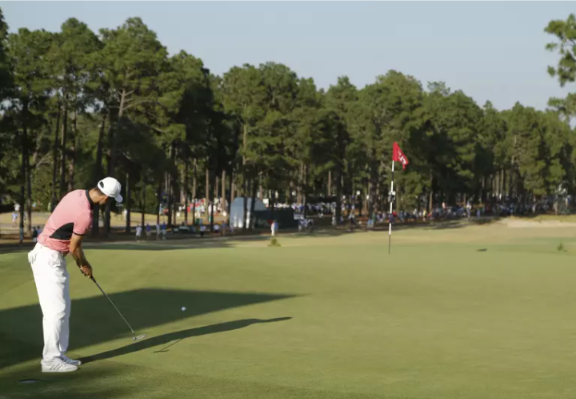Brooks Koepka started the current streak by winning his fifth major at the PGA Championship at Oak Hill. Most recently, Xander Schauffele secured his first major victory at the PGA Championship at Valhalla.
While the golf world has been engrossed in the ongoing drama between the PGA Tour and LIV Golf, and the influx of private equity and growing prize pools, one fact remains noteworthy as we approach the U.S. Open: American golfers have been dominating the majors. Over the last five major tournaments, five different American golfers — Koepka, U.S. Open champion Wyndham Clark, British Open champion Brian Harman, Masters champion Scottie Scheffler, and Schauffele — have emerged victorious. This is the longest streak of American winners in 40 years, reminiscent of the era when Larry Nelson, Tom Watson, Hal Sutton, Ben Crenshaw, and Fuzzy Zoeller claimed major titles between 1983 and 1984.
This succession of American champions highlights a deep pool of talent in the U.S., though it raises questions about parity in the sport. Notably, three of these recent American winners were first-time major champions. However, any discussion about parity must acknowledge the exceptional form of Scottie Scheffler. Scheffler has held the number one spot in the world rankings for 13 consecutive months, a tenure unmatched since Tiger Woods’ reign from 2005 to 2010. As the favorite for the 124th U.S. Open at Pinehurst No. 2 in North Carolina, Scheffler’s remarkable year continues.
Since January, Scheffler has consistently finished in the top 10, with his momentum only briefly interrupted by an unexpected incident. Before the second round of the PGA Championship, Scheffler was arrested and briefly jailed. Despite the disruption, he made his tee time and finished tied for eighth. The charges were eventually dropped, but the incident, and his mug shot, remain a notable part of his year.
Scheffler, who has never played Pinehurst No. 2 before, except for studying a flyover video, is not alone in his inexperience with the course. Only a handful of players in the field of 156 have played a U.S. Open at Pinehurst No. 2 before, with veterans like Phil Mickelson and Matt Kuchar among the few to have competed in all four U.S. Opens held there.
Pinehurst No. 2, a course steeped in history, first hosted significant events like the 1936 PGA Championship and the 1951 Ryder Cup. It re-entered the major championship scene in 1999 with the U.S. Open, and has been a regular host since, with four more U.S. Opens scheduled through 2047. Jack Nicklaus, who competed in the 1999 U.S. Open at age 59, described the course’s challenging nature, particularly its turtleback greens that tend to repel errant shots.
The course’s unique “sandscapes” — sprawling dunes with wiregrass replacing traditional rough — present a demanding test for players. Ludvig Aberg, making his U.S. Open debut, noted the difficulty of the course, anticipating firm and fast conditions.
As the U.S. Open approaches, players like Rory McIlroy and Jon Rahm aim to end the American dominance in majors. Rahm, who has not won a tournament since the 2023 Masters, faces a 14-month victory drought, his longest since turning professional. Despite a lackluster performance in recent majors, historical patterns suggest that international players like Rahm might break the American winning streak, just as Seve Ballesteros did in 1984 after a similar American streak in the early 1980s.
